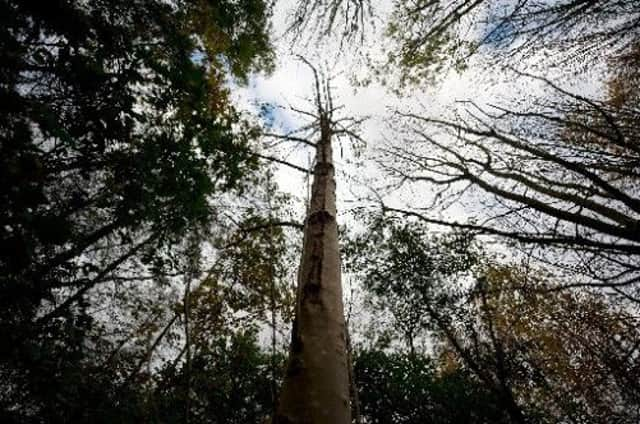Fungus could kill 60% of infected ash woodlands by 2023


Scientists estimated that 90 per cent of Britain’s 126 million ash trees will become infected, causing ash dieback.
Dr Dave Reay of the university’s school of geosciences, who conducted the research, said the loss of a large volume of trees by the wind-blown fungus, Chalara, could also aggravate the effects of climate change.
Advertisement
Hide AdAdvertisement
Hide AdScotland currently has 111 recorded ash dieback cases among its 10.7 million trees. As of March there were 391 cases south of the Border. Numbers are expected to rise when results of earlier samples from suspected sites are analysed. The disease has also lain dormant over the winter but could flourish in warmer weather.
Last month, experts at a Scottish Government summit proposed a huge protection zone covering the north-western half of Scotland to limit the spread of the disease.
Losing a large portion of Britain’s woodland will reduce the amount of carbon dioxide that is removed from the air and stored in trees, and the harmful greenhouse gas will instead be released into the atmosphere.
Dr Reay said the full repercussions of widespread ash dieback remained to be seen but estimated the loss of such a high number of trees could result in a disturbance to British woodland carbon stocks of around five million tonnes.
“The loss of these trees is devastating enough for the landscape, but will also send big ripples through the ecosystem,” he said. “Ash dieback will create a big splash in the environment’s ability to remove carbon from the atmosphere, so understanding its impacts will be vital for informing woodland management in the future.
“As the ash trees grow, they lock up carbon dioxide. So, as they die off, the carbon in them released will be five million tonnes over the next decade.”
Dr Reay, whose findings are published in this month’s edition of the journal Atmospheric Environment, said ash dieback had been in Europe for a long time and had gradually spread to different countries.
He said: “It has been around for hundreds, thousands of years. But something which would have taken centuries to spread is now taking weeks or months because of the ease of transportation by lorry or boat. That’s an issue for all plant diseases.”
Wind-blown spores allow natural spread of the disease of between 12 and 19 miles per year, but more rapid spread may occur through transport of infected plants and wood products.